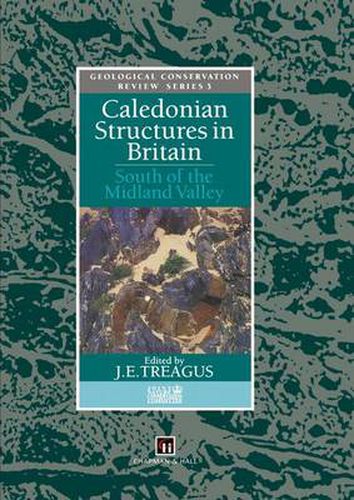Readings Newsletter
Become a Readings Member to make your shopping experience even easier.
Sign in or sign up for free!
You’re not far away from qualifying for FREE standard shipping within Australia
You’ve qualified for FREE standard shipping within Australia
The cart is loading…






This title is printed to order. This book may have been self-published. If so, we cannot guarantee the quality of the content. In the main most books will have gone through the editing process however some may not. We therefore suggest that you be aware of this before ordering this book. If in doubt check either the author or publisher’s details as we are unable to accept any returns unless they are faulty. Please contact us if you have any questions.
This volume deals with those sites selected as part of the Geological Conservation Review (GCR) within the southern British part of the Caledonides, that is, the paratectonic Caledonides - a Caledonian terrane without strong and pervasive deformation and metamorphism, such as occurred further north. This orogenic belt formed by long and complex processes of earth movements between 500 and 380 million years before the present (?late Cambrian to mid-Devonian times), and has been classic ground for geologists for two hundred years. It is perhaps no accident that James Hutton in 1795 chose to illustrate his geostrophic cycle (and unconformity) with three visually explicit examples of the deformation wrought on Lower Palaeozoic rocks by Caledonian events. The former Caledonian mountain chain, which can be seen today in fragmented pieces in Scandinavia, Britain and Ireland, and North America, was ultimately the result of the collision of two continental plates and the closure of a former ocean, Iapetus. Some of these fragments, including those in Scandinavia, southern Britain, and the Republic of Ireland and the Maritime Provinces of Canada, are thought to have lain on the south side of the ocean before collision: the rest of North America, northern Ireland, and Scotland are thought to have lain north of the former Iapetus.
$9.00 standard shipping within Australia
FREE standard shipping within Australia for orders over $100.00
Express & International shipping calculated at checkout
This title is printed to order. This book may have been self-published. If so, we cannot guarantee the quality of the content. In the main most books will have gone through the editing process however some may not. We therefore suggest that you be aware of this before ordering this book. If in doubt check either the author or publisher’s details as we are unable to accept any returns unless they are faulty. Please contact us if you have any questions.
This volume deals with those sites selected as part of the Geological Conservation Review (GCR) within the southern British part of the Caledonides, that is, the paratectonic Caledonides - a Caledonian terrane without strong and pervasive deformation and metamorphism, such as occurred further north. This orogenic belt formed by long and complex processes of earth movements between 500 and 380 million years before the present (?late Cambrian to mid-Devonian times), and has been classic ground for geologists for two hundred years. It is perhaps no accident that James Hutton in 1795 chose to illustrate his geostrophic cycle (and unconformity) with three visually explicit examples of the deformation wrought on Lower Palaeozoic rocks by Caledonian events. The former Caledonian mountain chain, which can be seen today in fragmented pieces in Scandinavia, Britain and Ireland, and North America, was ultimately the result of the collision of two continental plates and the closure of a former ocean, Iapetus. Some of these fragments, including those in Scandinavia, southern Britain, and the Republic of Ireland and the Maritime Provinces of Canada, are thought to have lain on the south side of the ocean before collision: the rest of North America, northern Ireland, and Scotland are thought to have lain north of the former Iapetus.